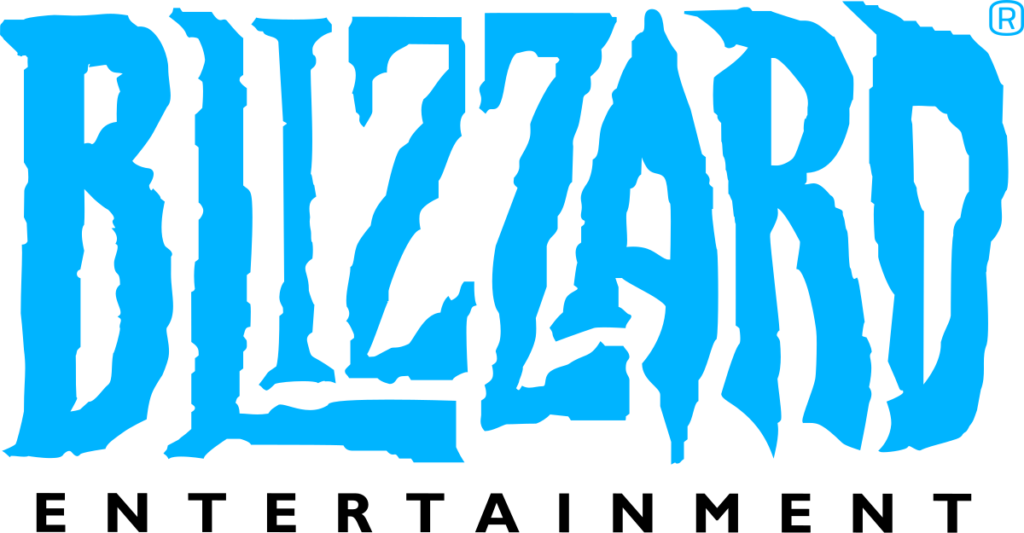On the Polish market, gaming marketing still represents a small percentage of communication budgets and we have been observing interest in the use of gaming itself only for the last few years. And yet, the business of production, distribution and consumption of computer games is, on a global scale, a bigger industry than all other entertainment sectors put together. With the “exclusion” of television, gaming is larger than the revenues of all of Hollywood, streaming music or the rest of the press. And the pandemic has further kicked this industry into 6th gear.
More here.
That’s why the crisis that Blizzard is going through is hard to compare to anything else. The disaster of this legendary developer, responsible for such brands as Warcraft, Starcraft, Diablo and Overwatch can be compared perhaps only to the hypothetical collapse of the animation giant Pixar. And although it may be an exaggerated comparison, the collapse of the creator of the titles on which at least two generations of players have grown up, is observed and commented on with amazement all over the world.
A brief history and diagnosis of Blizzard’s crisis for all “non-gamers”

Blizzard is an American game development studio founded in the 1990s by a handful of enthusiasts. Its first big hit was the fantasy real-time strategy “Warcraft”, the next: the dynamic RPG “Diablo”. After the release of the second part of Warcraft in 1998, the “big trinity” of Blizzard brands was joined by “Starcraft”, whose plot takes place in the distant future. Each of these games broke sales records and set new standards of gameplay quality for the entire industry.
In the late 90s, as a result of a transformation of ownership, the company became owned by the French conglomerate Vivendi, but retained significant autonomy. The beginning of the new millennium saw the second part of “Diablo”, the third part of “Warcraft” and probably the biggest hit of the studio – MMORPG “World of Warcraft”, which is still played by millions of players, paying a monthly subscription fee.
For years, the Blizzard logo has been an indicator of the top quality of computer games. All the gamers I know have come across one of the company’s franchises at some point in their gaming lives. Since 2005, a huge annual convention called BlizzCon has been held for the studio’s huge fan base. It is worth mentioning that it was also Blizzard that pioneered e-sports – the world championships in Starcraft or Overwatch, which were followed by millions of fans.
In 2008, another change took place and this time it was the beginning of the end for many gamers – the studio was merged with Activision, creating the Activision-Blizzard holding company. The next released titles – the second “Starcraft” and the third part of “Diablo” – were, to a lesser extent, built according to the rule (in the spirit of Apple) of “providing the highest quality content for a high price”. The strategy largely focused on monetization resulted in further missteps: the campaign for the second “Starcraft” was split into three separate games, microtransactions criticized by players were introduced, and in “Diablo III” an auction house appeared, which was removed as a result of unflattering user reviews. In 2013, there was another change in the ownership structure of the studio and Bobby Kotick (currently probably a figure in the gaming world who is not enjoying recognition) became the CEO of Activision-Blizzard. He’s the one who’s been accused of making decisions that destroyed Blizzard’s previous game development culture – one that was extremely detail-oriented, took a lot of time, and abandoned many projects so that only the most polished ones would go on sale. This meant burning through a lot of money in the company – and this is where the new management started to make changes. The demand was to speed up production processes and increase the number of released games. Thus managed Blizzard still completed its last global hit – the “Overwatch”, also closed the “Starcraft II” trilogy after which the slump began, or perhaps even the collapse of the giant:
- Blizzard founder Mike Morhaime stepped down as CEO in 2018
- group layoffs damaged not only the development teams, but also the very important community support team for the company. Blizzard closed its offices in France and the Netherlands, and began reducing support for certain games (Starcraft is now a dead game – it has officially been announced that there will be no new content). Fans were outraged by the fact that in this situation Blizzard’s board paid themselves gigantic bonuses at the end of the year
- Huge dissatisfaction among fans brought, for example, the fact that Blizzard banned one of the players in “Heartstone” because he supported the protests in Hong Kong. For players, such action had a symbolic meaning
- instead of surprising with new products, the company began to cut off coupons from its former glory – the refreshed version of “Warcraft 3” turned out to be a qualitative failure, the announcement of “Diablo” for cell phones was booed at Blizzcon 2018 (to this day we have not played the game), there no information whatsoever on the second part of “Overwatch”, we know nothing about the release date of “Diablo 4” … and there no new brands
- In recent months, many top developers have left the company – Blizzard no longer employs the main people responsible for Starcraft, Overwatch or (more recently) the main creators of Diablo 4
- and finally, it all blew up: it turned out that the company had an unsupportive atmosphere for a long time now, with incidents of harassment, bullying, and sexism (the phrase that there was a “rock star” culture might sound nice… until you think about what that really means). Unfortunately, management was not responsive to the above reported incidents. There was also a fatal situation – as a result of an unacceptable course of events during a company party, one of the female employees committed suicide. This situation, among others, led to a lawsuit by the State of California. This event culminated in the resignation of the CEO, and the top of other managers now accused of bullying left with him. Coca-Cola and T-Mobile withdrew from sponsorship of the Overwatch League. Workers staged a general strike in late July, and the company’s stock continues to fall.
And this is how a legend dies
Should we even care about these events? Some may feel sad that they won’t be able to play any new versions of their favorite titles in the near future. Others, like me, feel that Blizzard “killed” their beloved franchise, developed for 20 years. I think, however, that it’s worth watching the decline of the studio not only if you loved its games. Like a lens in this implosion you can see the crisis areas of many companies, business models, or maybe even the entire model of capitalism in which we function.
- – First of all, there’s no denying that the business model, built on delivering very rare, very expensive to produce games in a clash with huge competition… simply stopped working. What’s more, Blizzard, apart from the virtual card game “Heartstone”, had no mobile game, which also seems antediluvian, not to say… a bit boomerish.
- – “Boomerish,” much like – as we’re just learning – the culture within the company itself. A new generation has grown up, one that no longer condones toxicity and sexism in the workplace and is not afraid to loudly demand income equality between the sexes. The information coming out of Blizzard shows that the company’s management has been unable to heal the culture of the organization in any way. Does this not remind us of the situation in other Polish companies?
- Blizzard’s recent years are also an outstanding manifestation of “sequel economics”. For several years, the company hasn’t released any new games – only sequels to old franchises and… remastered versions of “antediluvian” games have appeared (the relatively successful classic “Starcraft”, the disastrous “Warcraft 3”, and in a month we’ll be able to play “Diablo 2: Resurrected”). This is a huge problem also on other fronts – after all, it’s always safer to produce another part of “Fast and the Furious”, another Marvel movie, another episode of Minions. A new “brand” in pop culture is always a great risk
- Our “narrative needs” have probably also changed. Blizzard used to place great importance on “world-building” (which continues to appear in the materials encouraging people to work for the company). But elaborate storylines are probably a thing of the past in the game industry. Immersiveness is now achieved differently – primarily through advanced technology, but also through community features. Blizzard didn’t recognize this quickly enough (the ultra-popular League of Legends game was based on a mod for World of Warcraft, but the idea was quickly taken over by the Chinese Tencent for next to nothing). How do we play games now? To a much lesser extent in long hours of single-player sessions in front of the computer (which is how, for example, I played Starcraft for many years). We play with friends at a party or for a few minutes in a secluded place much more often. Interestingly, it seems that in our industry we are also observing a tendency to shorten advertising plots. More here.
But perhaps this is an even deeper problem. It’s possible to see Blizzard’s demise as a symbol of how modern capitalism is not conducive to outstanding individuals and their creative process, demanding “more” and “faster” to the detriment of the quality of content (how do we evaluate the new “Star Wars”, created under the aegis of Disney?). You can see in it a symbol of generational change – both among developers and players. But… you can also (as pointed out in his video essay “Activision Blizzard And Industry Abuse: Burn It All Down” by YouTuber Jim Sterling) look at it more broadly. It’s not just Blizzard. It’s also Riot Games or Ubisoft. According to Sterling, the entire gaming industry has a problem with sexism, with a toxic work culture, with bullying in the workplace. And the fact that Blizzard’s rather sudden financial and quality crisis was overtaken by many years of toxic masculinity may also have a symbolic dimension. Because actually, from its beginnings, the entire gaming industry has been made up of “adults who go on acting like little boys” (that’s Sterling again).
And maybe that’s the biggest lesson from Blizzard’s implosion: whether you create or delve into immersive, escapist worlds full of bloodthirsty aliens and monsters ready to slaughter, you still have to grow up in the end.
Player of Starcraft for many years.


